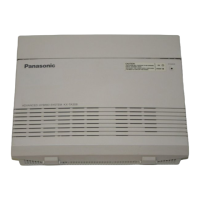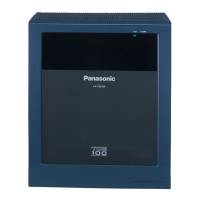Feature Guide References
2.1.1.3 Direct Inward Dialling (DID)/Direct Dialling In (DDI)
DDI / DID Destination—Day, Lunch, Break, Night
Specifies the DDI/DID destination in each time mode.
Value Range
Max. 5 digits (consisting of 0–9)
Maintenance Console Location
18.3 PBX Configuration—[10-3] CO & Incoming Call—DDI / DID Table
PC Programming Manual References
10.6.1 PBX Configuration—[2-6-1] System—Numbering Plan—Main
18.3.1 PBX Configuration—[10-3] CO & Incoming Call—DDI / DID Table—Automatic Registration
Feature Guide References
2.1.1.3 Direct Inward Dialling (DID)/Direct Dialling In (DDI)
4.2.1 TIE Line Service
Tenant Number
Specifies the tenant number, to determine the Time Table by which calls are distributed depending on the time
of day.
Value Range
1–8
Maintenance Console Location
18.3 PBX Configuration—[10-3] CO & Incoming Call—DDI / DID Table
PC Programming Manual References
10.4 PBX Configuration—[2-4] System—Week Table
Feature Guide References
2.1.1.3 Direct Inward Dialling (DID)/Direct Dialling In (DDI)
UM Service Group No.
Specifies the Service Group number sent to the Unified Messaging system when the incoming call destination
is the floating extension number of a UM group.
The Service Group number is used to allow the Unified Messaging system to send the applicable greeting
message to the caller.
820 PC Programming Manual
18.3 PBX Configuration—[10-3] CO & Incoming Call—DDI / DID Table

